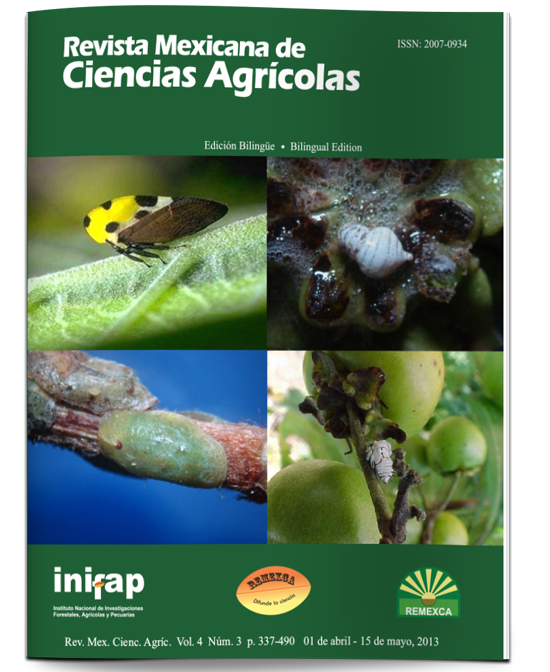Effect of agricultural practices on soil bacterial populations in cropping systems in Chihuahua, Mexico
DOI:
https://doi.org/10.29312/remexca.v4i3.1198Keywords:
bio-fertilizer, rhizobia, soil, sustainable agricultureAbstract
Sustainability is the biggest challenge faced by Mexico against a backdrop of bleak environmental degradation. It is necessary to acquire knowledge and to implement environment-friendly alternatives in order to preserve and maintain the natural resources of the country, a key factor in improving the profitability of agricultural production. In nature there is an unknown number of associations between microbial populations, which are influenced by environmental, physical and chemical factors. Microbial relationships determine the dominant or inhibited communities that exist in the soil, in the roots of the plants, and also those that coexist without affecting (positively or negatively) other populations. The factors determining microbial activity are important because of their influence in maintaining soil fertility and crop nutrition. Therefore, this work studied the bacterial populations present in locations with different soil and climatic conditions. This in order to evaluate the presence of bacterial populations potentially beneficial for the crops of interest in the region. Initially, the total bacterial population and the subpopulation with rhizobial group characteristics were estimated in samples from three localities of the state of Chihuahua in June 2007, from 11 composite samples of agricultural soils. Bacterial population density was evaluated at levels from 1X102 to 6.6X103 UFC g-1, very low values for agricultural soils, suggesting the negative effect of pesticide application on the microbial populations of the soil.
Downloads
Downloads
Published
How to Cite
Issue
Section
License
The authors who publish in Revista Mexicana de Ciencias Agrícolas accept the following conditions:
In accordance with copyright laws, Revista Mexicana de Ciencias Agrícolas recognizes and respects the authors’ moral right and ownership of property rights which will be transferred to the journal for dissemination in open access. Invariably, all the authors have to sign a letter of transfer of property rights and of originality of the article to Instituto Nacional de Investigaciones Forestales, Agrícolas y Pecuarias (INIFAP) [National Institute of Forestry, Agricultural and Livestock Research]. The author(s) must pay a fee for the reception of articles before proceeding to editorial review.
All the texts published by Revista Mexicana de Ciencias Agrícolas —with no exception— are distributed under a Creative Commons License Attribution-NonCommercial 4.0 International (CC BY-NC 4.0), which allows third parties to use the publication as long as the work’s authorship and its first publication in this journal are mentioned.
The author(s) can enter into independent and additional contractual agreements for the nonexclusive distribution of the version of the article published in Revista Mexicana de Ciencias Agrícolas (for example include it into an institutional repository or publish it in a book) as long as it is clearly and explicitly indicated that the work was published for the first time in Revista Mexicana de Ciencias Agrícolas.
For all the above, the authors shall send the Letter-transfer of Property Rights for the first publication duly filled in and signed by the author(s). This form must be sent as a PDF file to: revista_atm@yahoo.com.mx; cienciasagricola@inifap.gob.mx; remexca2017@gmail.
This work is licensed under a Creative Commons Attribution-Noncommercial 4.0 International license.



